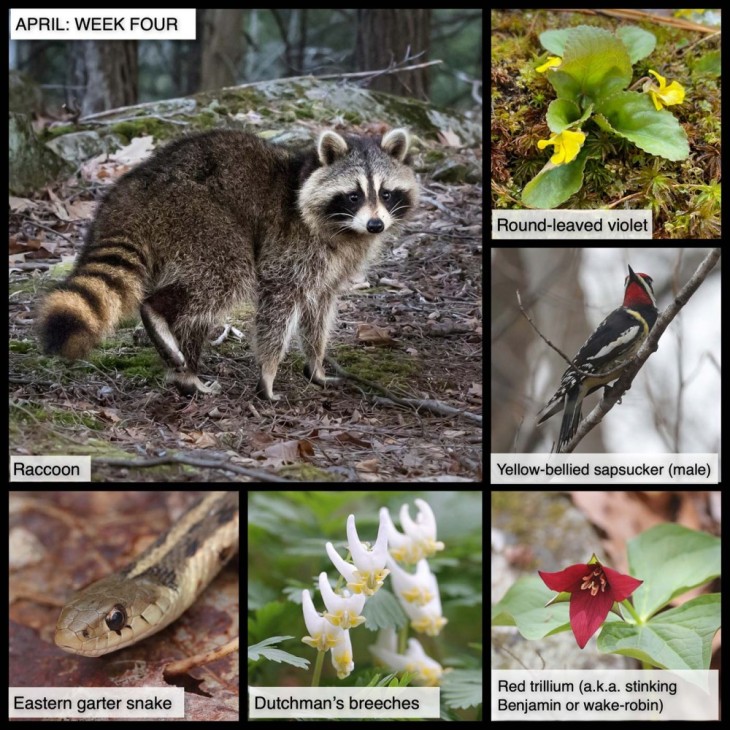This Week in the Woods, American kestrels are feeling flirty and should be laying eggs soon, if they’re not already. This photo shows a dinner date in progress. The female is perched on the birdhouse, in the process of eating a mysterious something. The smaller bird on the pole is the male. Notice his slate blue wings, which is one easy way to distinguish the genders.
Kestrels are the smallest of the North American falcons, and they’re easy to observe in our area. You often see them along roadside fields, especially on power lines, telephone poles, and other high perches that provide sufficient height for the birds to scan the area for mice, grasshoppers, and other small prey. Although they need open space to hunt, kestrels are also one of many species that require tree cavities or other sheltered spaces to raise their young. Here’s an Outside Story article by Tami Gingrich, describing the wildlife value of tree cavities – something to keep in mind, if you’re tempted to cut down an old snag for aesthetic reasons!
Tree bud burst – when deciduous leaves emerge – is underway in the Upper Valley, and this past weekend, we found many American hornbeams with young leaves and elongating catkins. American hornbeam is also called “muscle tree” because of the oddly sculpted shape of its smooth gray branches and trunk.
An interesting side note: Bud burst doesn’t occur at exactly the same time every year, and will likely continue to shift due to climate change. Scientists and technicians who participate in the Hubbard Brook Ecosystem Study have monitored bud burst’s timing for several tree species over many years, and they have developed a remarkably good predictive model, based on factors including the number of 40-degree temperature days in succession. Here’s a blog post describing this research.
Red maples are flowering, as are many of our early spring wildflowers. Photos have been a bit tricky the past few days given flowers’ bedraggled, rain-soaked appearance, but here are archive photos of two favorite wildflowers that are now in full bloom in the woods: blood root and red trillium (also known as red wakerobin). We have yet to see mourning cloak butterflies, but they should be out by now, so keep an eye out for fluttering brown forms in the woods, when sun returns later this week. Adult mourning cloaks spend the winter in diapause beneath bark, in tree cavities and other dry spaces, and the tattered specimens that you see flying in early spring, are mating and laying eggs. A new batch of adults will appear in early summer.
What have you noticed in the woods this week? Submit a recent photo for possible inclusion in our monthly online Reader Photo Gallery.


